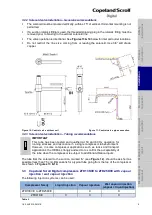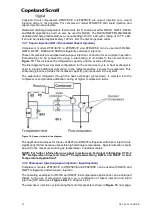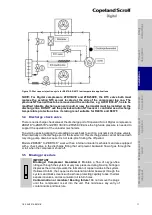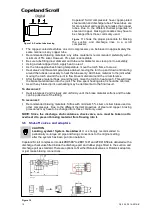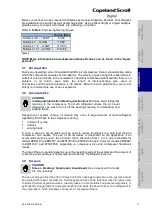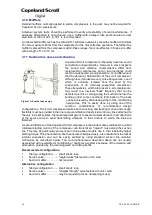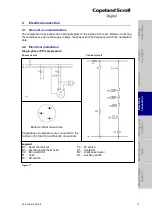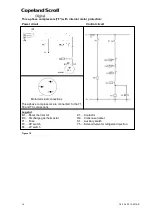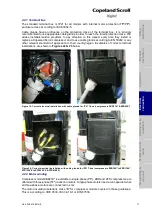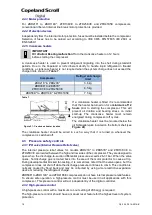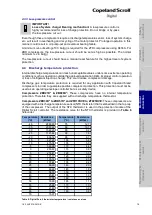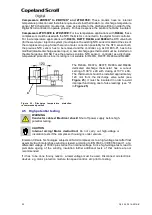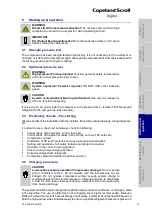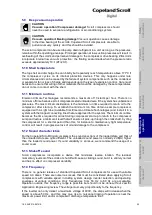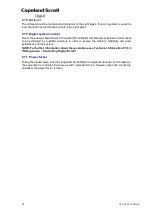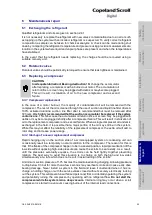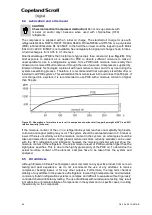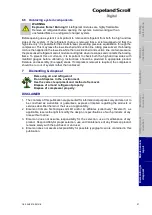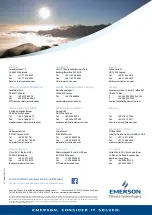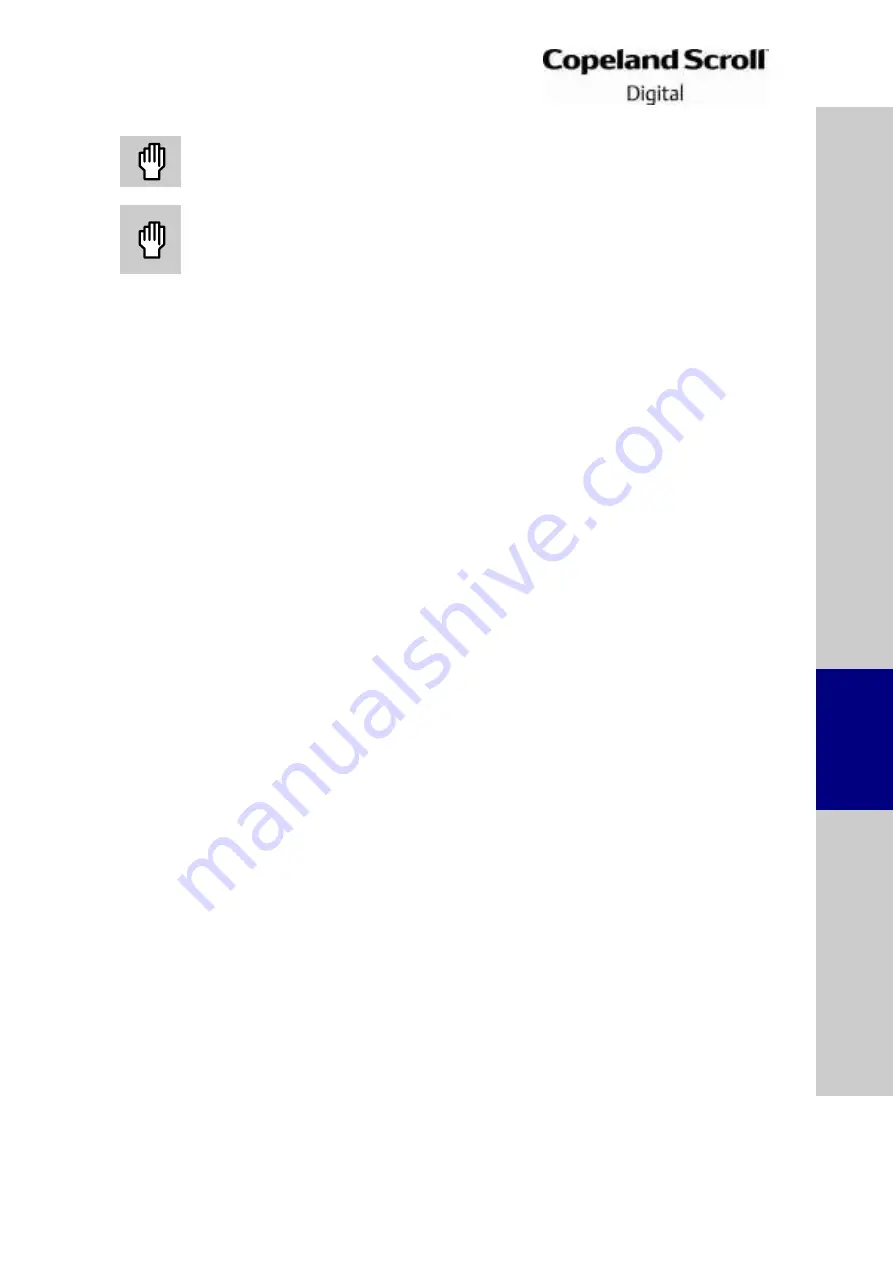
C6.2.24/0215-0515/E
23
5.9 Deep
vacuum
operation
CAUTION
Vacuum operation! Compressor damage!
Scroll compressors should
never be used to evacuate a refrigeration or air-conditioning system.
CAUTION
Vacuum operation! Bearing damage!
Vacuum operation causes damage
to the drive bearing of the scrolls. Copeland Scroll compressors are able to
pull vacuum very quickly and this should be avoided.
The scroll compressor can be used to pump down refrigerant in a unit as long as the pressures
remain within the operating envelope. Prolonged operation at low suction pressures will result in
overheating of the scrolls and permanent damage to the compressor drive bearing. ZB scrolls
incorporate internal low vacuum protection; the floating seal unloads when the pressure ratio
exceeds approximately 10:1 (ZF>20:1).
5.10 Shell
temperature
The top shell and discharge line can briefly but repeatedly reach temperatures above 177°C if
the compressor cycles on its internal protection devices. This only happens under rare
circumstances and can be caused by the failure of system components such as the condenser
or evaporator fan or loss of charge and depends upon the type of expansion control. Care must
be taken to ensure that wiring or other materials that could be damaged by these temperatures
do not come in contact with the shell.
5.11 M inimum run time
Emerson Climate Technologies recommends a maximum of 10 starts per hour. There is no
minimum off time because scroll compressors start unloaded even if the system has unbalanced
pressures. The most critical consideration is the minimum run time required to return oil to the
compressor after start-up. To establish the minimum run time obtain a sample compressor
equipped with a sight tube (available from Emerson Climate Technologies) and install it in a
system with the longest connecting lines that are approved for the system. The minimum on time
becomes the time required for oil lost during compressor start -up to return to the compressor
sump and restore a minimal oil level that will ensure oil pick -up through the crankshaft. Cycling
the compressor for a shorter period than this, for instance to maintain very tight temperature
control, will result in progressive loss of oil and damage to the compressor.
5.12 Sound characteristics
For the Copeland Scroll Digital compressor the sound spectrum of the loaded state and that of
the unloaded state are quite different. The unloaded sound power is normally 2 dB(A) higher
than the loaded sound power. If sound variability is an issue, we recomm end the usage of a
sound cover.
5.13 Shut-off sound
Scroll compressors incorporate a device that minimizes reverse rotation. The residual
momentary reversal of the scrolls at shut off will cause a clicking sound, but it is entirely normal
and has no effect on compressor durability.
5.14 Frequency
There is no general release of standard Copeland Scroll compressors for use with variable
speed AC drives. There are numerous issues that must be considered when applying Scroll
compressors with variable speed, including system design, inverter selection, and operating
envelopes at various conditions. Only frequencies from 50 Hz to 60 Hz are acceptable.
Operation outside this frequency range is possible but should not be done without s pecific
Application Engineering review. The voltage must vary proportionally to the frequency.
If the inverter can only deliver a maximum voltage of 400V, the amps will increase when the
speed is above 50 Hz, and this may give rise to nuisance tripping if operation is near the
maximum power limit and/or compressor discharge temperature limit.
S
a
fe
ty
in
s
tr
u
c
ti
o
n
s
P
ro
d
u
c
t
d
e
s
c
ri
p
ti
o
n
In
s
ta
ll
a
ti
o
n
E
le
c
tr
ic
a
l
c
o
n
n
e
c
ti
o
n
S
ta
rt
in
g
u
p
&
o
p
e
ra
ti
o
n
M
a
in
te
n
a
n
c
e
&
re
p
a
ir
D
is
m
a
n
tl
in
g
&
d
is
p
o
s
a
l

